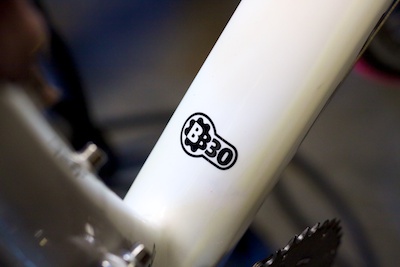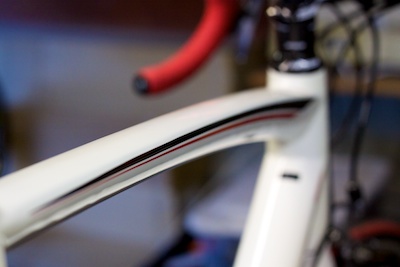Save your Soul with a Good Ride
Sometimes even I get tired of the bike. A good way to break up the monotony is to take a different route, ride another bike, or climb up a hill and blast down it at 50 + MPH. You know, feel alive again, after having your life force drained by work and sitting in an office.
 Last night, it was a Sunset Ride with a 2010 Team Raleigh. The thing about Seattle is we put up with the rainy season for the days when the sun comes out and that brilliant yellow orb was out in full. Typically, a bike review would consists of how stiff it is or isn’t, a component run down, and some new way to describe how it accelerates or that SRAM shifts loudly, but good.
Last night, it was a Sunset Ride with a 2010 Team Raleigh. The thing about Seattle is we put up with the rainy season for the days when the sun comes out and that brilliant yellow orb was out in full. Typically, a bike review would consists of how stiff it is or isn’t, a component run down, and some new way to describe how it accelerates or that SRAM shifts loudly, but good.
Yesterday the Raleigh was like a Calgon Bath that took me away to another place. Instead of work, my head was full of Paris Roubaix and the performance of Spartacus. Riding over a particularly nasty road near Lincoln Park, I focused on delivering power to the wheels to get over the cobbles and how well the bike tracked the tarred grooves in the road.
That’s what it’s about with a high-end road bike. However briefly, we live out our racing fantasy and the Raleigh is very well-equipped to do that. It’s also gorgeous. Without a studio shot, it’s hard to convey the milky-glossy finish and decals. The bike pops on the street and in the peloton. At this level, the bikes all perform well with nuances differentiating the ride. I can’t argue one is better than another, it comes down to how it rides for you, your budget, and the deal you get.
Bike makers have got the drivetrain down and figured out road feel. Like I’ve posted before, the next focus for them is on the head-tube. The fishing lure test I do, is grab the handlebars and shake hard right and left. See what happens. Does the front end move together like a wedge or flail around like a fly on the end of fishing pole. The Raleigh is more fly-like than wedge and that’s not bad. It’s a characteristic and one I noticed while riding.
The bike is similar to another not as well-marketed (compared to Cervelo et al.) bike, the Lapierre. A cantilever effect happens with the rear is stiffer than the front. Hit a big bump and the front end dives, while the rear snaps the bike back inline. Again, that’s subjective, a characteristic, and not a indication of a poor ride. If you’re spending hours in the saddle on a tour, you want a bike that absorbs big hits. A weekend warrior in parking lots crits? A bike that is less hit absorbent is important.
Imagine you’re slicing a corner at a sharp angle and hit a bump or need to snap the bike back upright to fly out of that corner. What does the bike do? Does it track like it’s on rails, or twist and wobble? In the same way that titanium bikes flex, as a frame-material characteristics, carbon front ends dive.
That’s based on the front-end configuration (including bar, stem, and wheels). The stiffest front end I’ve ridden is the Pinarrelo Dogma, and that’s not in the price-range of the Blue Collar Racer. The Raleigh’s headtube tapers from 1-1/8 to 1.5 and that’s should result in plenty of stiffness. I think they choose to soften the ride in the front, in the fork legs.
The Raleigh Brand
While certainly a very nice bike and at a good price, my concern is with the brand. Is this an imported-spec’d bike that fills catalog slots and floorspace on dealer floors or built with a singular passion to make the best bikes? It’s somewhere in between, but it’s hard to understand where Raleigh is with their brand. In the Cross space, they’re a beer bike with Rainier and Hamms decal. In urban, they’ve got the best price points and good bikes, but with a resemblance to other bikes.
Brand is an elusive, confused topic in the bike industry and no it doesn’t mean moving units or just sports marketing. It’s what your customers think of you and what we’re hearing is that
Raleigh, you’re a legend in the industry. Do something big, unique and special.
The Team Raleigh is very good. Unique and special is another question.
Brian Fornes, Raleigh’s marketing guy, probably totally disagrees with me on their brand and you can follow him on twitter. Asked about the bike he said
Raleigh exclusive molds. After 2 years of design and testing we created a frame that is 10% lighter and yet 20% stiffer than the previous Direct Connect. Each size mold is unique and crafted so every size will ride the same. Average frame weight is 920g and the forks come in at 355g. Weight of a complete 57cm Team bike – without pedals – has consistently tipped the scales around 14.7 lbs. And it’s probably one of the best values out there. Similarly equipped race bikes from other brands often cost hundreds, if not thousands more.
Specs
The Specs are
- Frame: HM2 High Modulus Monocoque Carbon w/BB30 Bottom Bracket, Tapered Headtube, Carbon Dropouts
- Fork: Carbon Monocoque 1-1/8 to 1.5 Taper
- Derailer: (F) SRAM Red (R) SRAM Red
- Cranks: SRAM Red BB30 39/53t
- Shifter: SRAM Red 10spd
- Rims: Mavic Ksyrium SL
MSRP: $5,500, as reviewed.
A Short Story
When asked about the carbon Raleigh uses, Brian also told me
It’s a very strong fiber only found in the greater Pacific Northwest. It is a naturally occurring fiber that is quite rare and not easy to come by. To ensure the highest quality we do not buy “farmed” fibers. Each fiber is hand woven together by the remnants of an indigenous species of peoples in the Cascades. And keeping with our new “green” policies the bonding process utilizes the guano from the same source of the fiber. Truly creating the first all natural, 100% green race bike.
Also check this old-school Raleigh.
…We're riding townies, adventure, and mountain bikes. Find recommendations on our store page. As Amazon Associates we earn from qualifying purchases.

